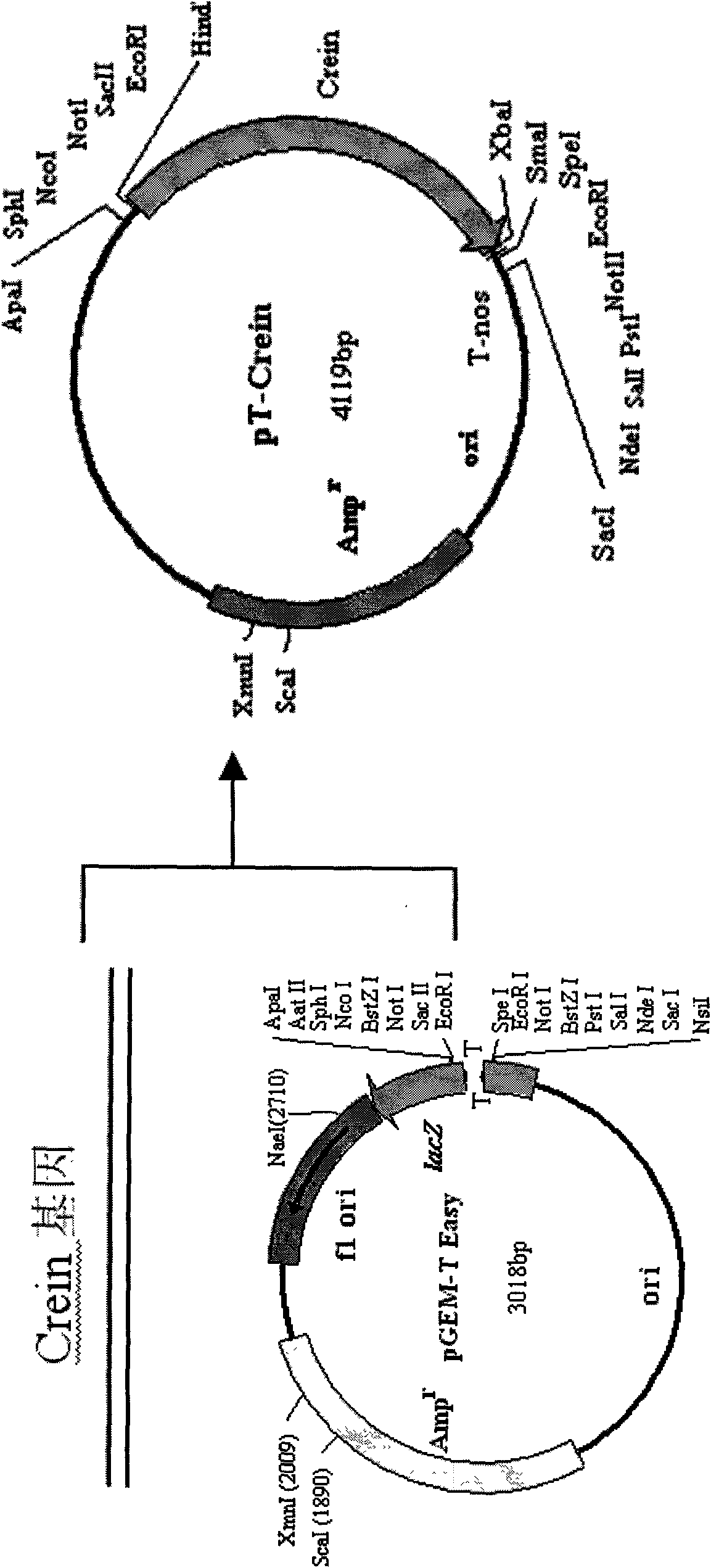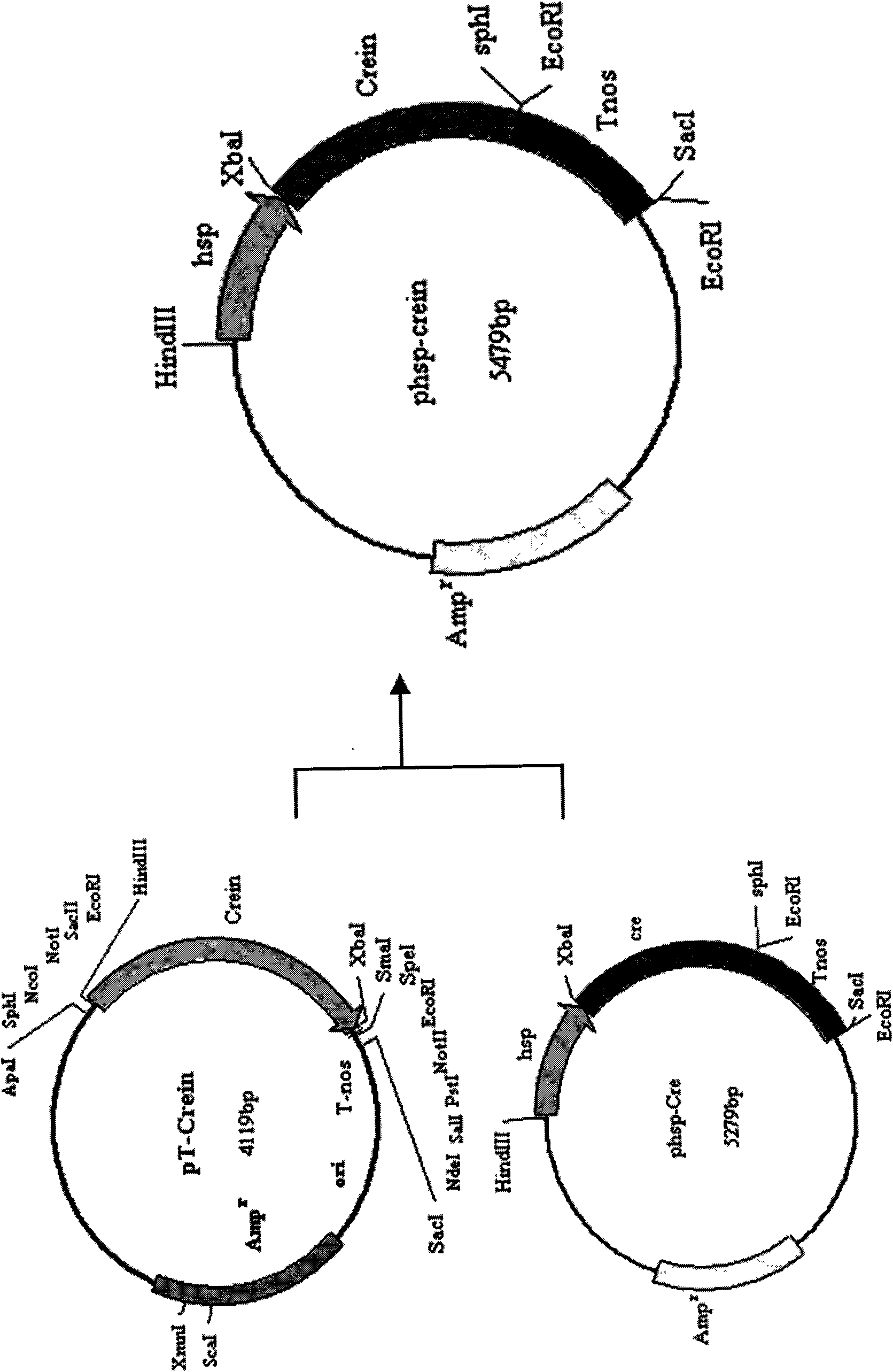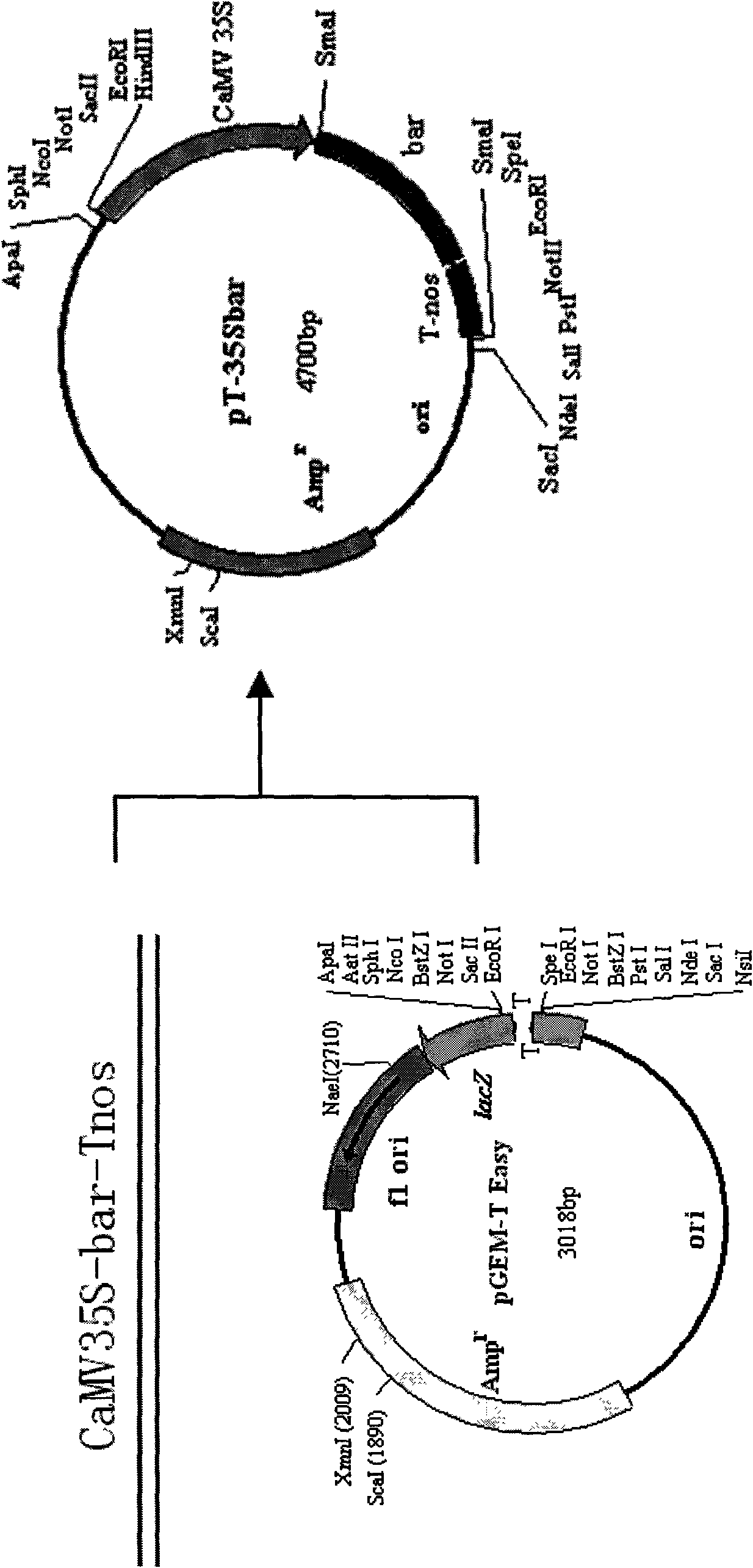Cre recombinase recombination gene and Cre/loxP-mediated transgenosis safe plant expression vector
A technology for plant expression vectors and recombinant genes, which is applied in the field of Cre recombinase recombinant genes and plant expression vectors, can solve the problems of reduced deletion efficiency and achieve the effects of avoiding leaky expression and potential safety hazards
- Summary
- Abstract
- Description
- Claims
- Application Information
AI Technical Summary
Problems solved by technology
Method used
Image
Examples
specific Embodiment approach 1
[0013] Specific embodiment 1: In this embodiment, the Cre recombinase recombination gene is named crein gene, and the DNA sequence of the crein gene is shown in SEQ ID NO:1. The length of the Cre recombinase gene crein gene of the present invention is 1222bp, and the head position of the gene is the first 3 bases of the cre gene, followed by TC (replace the original 4th and 5th bases with TC) + contains The sub-intron (AF354045.1) sequence, followed by the last 1027 bases of the cre gene.
[0014] In order to clone the Cre recombinase recombination gene of this embodiment—crein gene, this embodiment designs primer 08crein1:5’-GC TCTAGA ATGAGGTAAATTTCTAGTTTTTCTCCTTC-3'; primer crein2: 5'-TTGGTGTACGGTCAGTAAATTGCTGTAACTATCATCATCATCAT-3'; and primer cre3: 5'-GA GCATGC CTAATCGCCATCTTCCAGCA-3'.
[0015] The underlined part in the primer 08crein1 is the XbaI recognition site, and the underlined part in the primer cre3 is the SphI recognition site.
[0016] Step a: Amplify the in...
specific Embodiment approach 2
[0025] Specific embodiment 2: The Cre / loxP-mediated transgenic safe plant expression vector in this embodiment includes the marker gene bar, crein gene, heat shock promoter hsp and constitutive promoter CaMV35S, and the marker gene bar and crein gene are located in two In the same loxP site, the crein gene is driven by the heat shock promoter hsp, and the marker gene bar is driven by the constitutive promoter CaMV35S.
[0026] In this embodiment, the crein gene can be used in the Cre / loxP site-specific recombination system. In this embodiment, the crein gene is used for genetic transformation of plants, and the expression efficiency of cre is increased by 10% to 20% by semi-quantitative RT-PCR detection. In addition, since the crein gene introduces a 190bp intron sequence inside cre, its leaky expression in prokaryotes (such as Escherichia coli and Agrobacterium) is avoided, so that it co-exists with the loxP site in a system The operation in provides convenience.
[0027] Th...
specific Embodiment approach 3
[0029] Specific embodiment three: In this embodiment, the Cre / loxP-mediated transgenic safety plant expression vector is constructed according to the following steps:
[0030] Step a, the acquisition of heat shock promoter Gmhsp 17.5 (hsp):
[0031] ① Design PCR reaction primers
[0032] Primer hsp1:5'-CAT AAGCTT TTTCCACTTCAATTCCTCCTCT-3';
[0033] Primer hsp2: 5'-GT TCTAGA TGAGATCGCAAACAGGTAACTT-3';
[0034] The underlined part in the primer hsp1 is the HindIII recognition site, and the underlined part in the primer hsp2 is the XbaI recognition site.
[0035] ②PCR amplification reaction
[0036] The PCR amplification system is 20 μL: 2.0 μL 10×PCR buffer, 2.0 μL MgCl with a concentration of 25 mmol / L 2 , 0.2 μL of dNTPs with a concentration of 10 mmol / L, 1 μL of primer hsp1 with a concentration of 10 mmol / L, 1 μL of primer hsp2 with a concentration of 10 mmol / L, 0.2 μL of soybean genomic DNA (with a concentration of about 100 ng / μL), and 0.2 μL with a concentration of...
PUM
 Login to View More
Login to View More Abstract
Description
Claims
Application Information
 Login to View More
Login to View More - R&D
- Intellectual Property
- Life Sciences
- Materials
- Tech Scout
- Unparalleled Data Quality
- Higher Quality Content
- 60% Fewer Hallucinations
Browse by: Latest US Patents, China's latest patents, Technical Efficacy Thesaurus, Application Domain, Technology Topic, Popular Technical Reports.
© 2025 PatSnap. All rights reserved.Legal|Privacy policy|Modern Slavery Act Transparency Statement|Sitemap|About US| Contact US: help@patsnap.com



